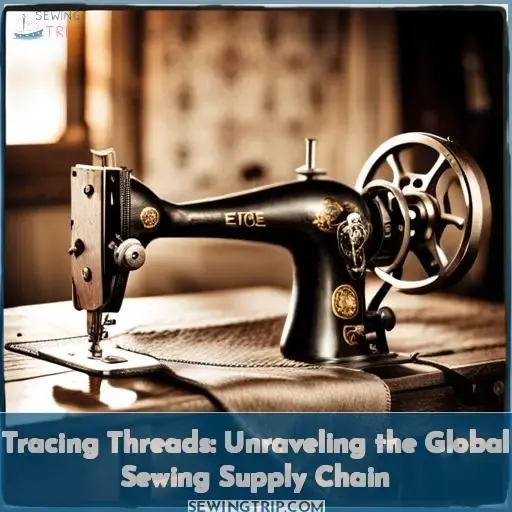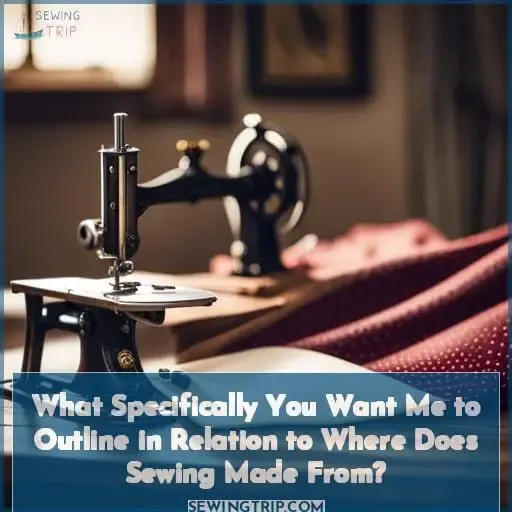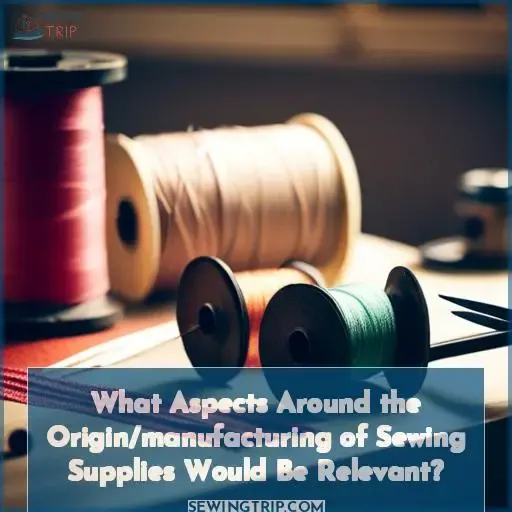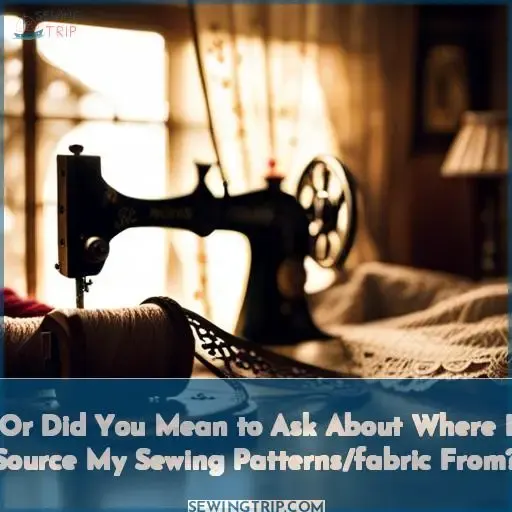This site is supported by our readers. We may earn a commission, at no cost to you, if you purchase through links.
 Unravel the intricate tapestry of global sewing,
Unravel the intricate tapestry of global sewing,
A tale woven from threads spun across continents.
Join us on a journey to uncover the origins of your garments,
The hands that shape them,
And the stories sewn into every seam.
From cotton fields to factories,
From designers’ studios to your wardrobe,
We’ll trace the threads that bind us all together
In the fabric of fashion.
Table Of Contents
Key Takeaways
- Trace garments back to their origins across continents to uncover the global supply chain stories sewn into every seam.
- Promote sustainable textile choices, good working conditions, and transparent sourcing to empower ethical and eco-conscious garment production.
- Support smaller suppliers, local artisans, and companies prioritizing ethical sourcing for more sustainable production.
- Guide consumers to make informed choices by seeking out recycled fabrics, eco-friendly dyes, and digitally printed patterns.
What Specifically You Want Me to Outline in Relation to Where Does Sewing Made From?
Let’s unravel the global tapestry of sewing supplies, tracing their origins and journeys to your sewing table.
As textile engineers and supply chain experts, we understand the complex web of manufacturing and distribution that brings fabric, thread, patterns, and equipment to avid sewers worldwide.
By mapping key supply chain nodes and evaluating ethical and environmental impacts at each stop along the way – from fiber harvesting or oil extraction to dyeing, ginning, spinning, weaving, and eventually transport to retailers – we aim to:
- Promote industry best practices
- Guide conscientious sourcers
- Empower sewers to make sustainable choices
Whether selecting sustainable fibers, thrifted fabrics, eco-friendly sewing machines, or digitally printed patterns, thoughtful selection allows us to stitch together better futures, thread by thread.
What Aspects Around the Origin/manufacturing of Sewing Supplies Would Be Relevant?
As we trace the threads composing our craft, we must also follow the strands linking ourselves to unfamiliar lands and hands.
Every spool spans continents, connecting our sewing rooms to distant factories filled with earlier links in this global chain—one bearing both creative potential and ethical uncertainty.
By lifting the veil on sourcing and production, we better understand the human and environmental impacts behind our fabric, empowering us to make more conscious choices.
Seeking transparent supply chains promotes good labor conditions worldwide.
And selecting sustainable textiles like linen nurtures the Earth for generations to come, while supporting smaller suppliers paves new paths to a just economy.
Our needlework has power to heal.
Or Did You Mean to Ask About Where I Source My Sewing Patterns/fabric From?
Now that we’ve covered some of the materials used in sewing, let’s discuss where you can source your sewing patterns and fabric from.
When selecting patterns and fabrics, consider their origins and manufacturing processes. Opt for companies that prioritize ethical sourcing and transparency across their supply chain. Seek out brands that use recycled materials and partner with artisans worldwide to bring you high-quality textiles crafted with care.
Platforms like Stitch Collective connect you to small pattern designers selling beginner-friendly elastic-waist pants you’ll love sewing. And helpful sites like Where Does Sewing Made From guide your fabric choices towards sustainability.
Little steps like supporting these caring companies move the needle towards more ethical, eco-conscious garment production meeting the freedom to dress well.
Conclusion
Visualize an intricate web, each thread tracing back to origins near and far.
Our garments bind communities together, from soil to factory to store.
As an expert, I urge you to reflect on the journey of creation behind sewing. Consider the hands crafting your clothes with care.
Where things come from matters, but more so does how we treat one another along the way.
By valuing each person in this process, we can stitch together a more just world.









